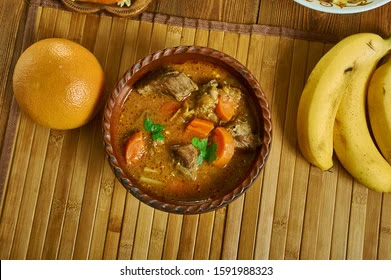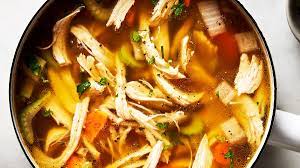Recipes for Thickened Soup

Palm Nut Soup 12 cups of palm nuts 1 large onion 500g meat 500g smoked fish 3 graden eggs 4 crabs or snails Salt and pepper to taste 3 tomatoes 1) Wash palm nuts, cover them with water in a saucepan and boil until they are soft. 2)Wash the meat. Cut into neat pieces, add half the onion, a little salt and a little water. Cook slowly in a separate pot. 3)When the nuts are soft, pour out water and beat the nuts in a mortar until the skins are crashed. Put them into a bowl and...





.jpg)
.jpg)

.jpg)
.jpg)
.jpg)